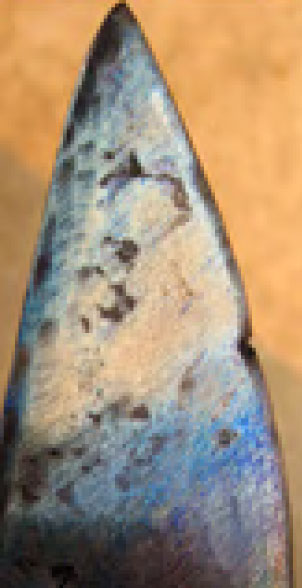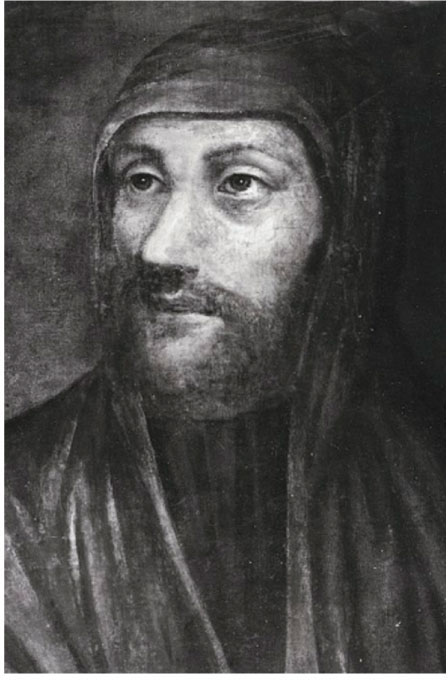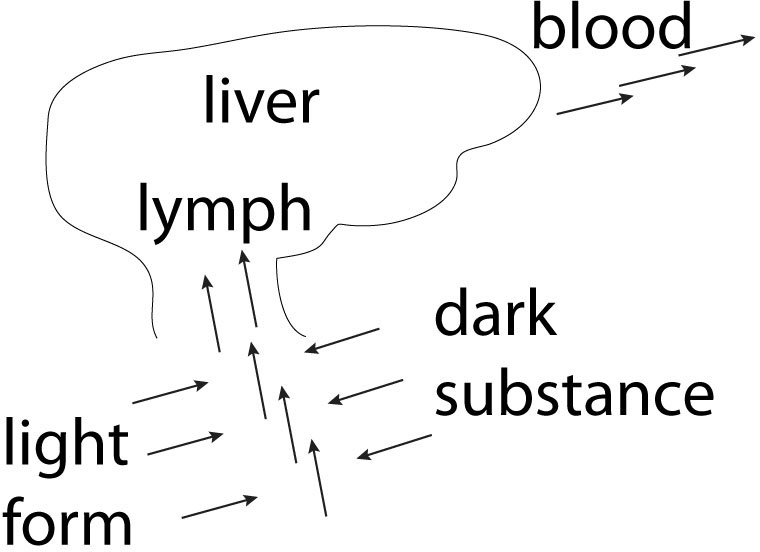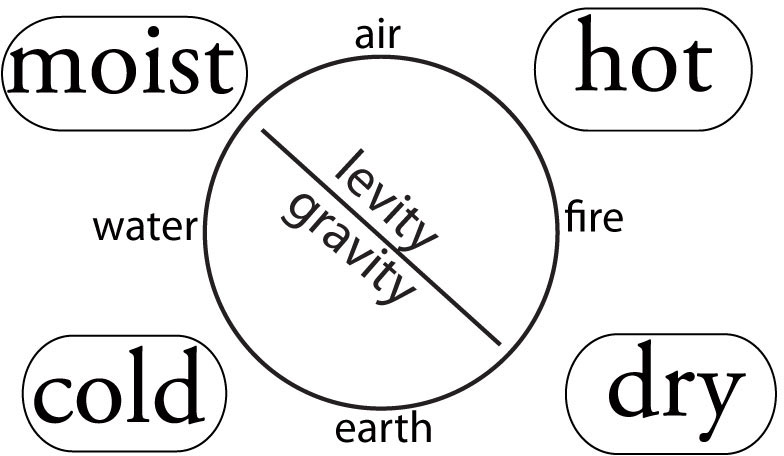Elements, Temperaments and Humors – Part 1
By Dennis Klocek 6 min read

Traditional medicine makes use of the principle of tempering. Tempering is the incremental application of small changes that gradually establish order through proportional balance. This is achieved by repeated actions applied in small incremental steps. Among plant medicines, potent herbs known as adaptogens (spikenard, ginseng, eleuthero, rhodiola) are valued for their tempering forces.

In music, the tempering of each note on a piano by slightly changing the vibrational intervals between each of the eighty eight notes has allowed the piano to play with all of the different ranges of the instruments in a symphony orchestra. Tempering an iron knife blade involves reheating it in small increments (colors show different temperatures) after high temperature forming makes it strong but brittle.
The brittle iron is heated to bring the steel into a condition of balance. Softer tempered steel has had small temperature adjustments to balance hardness and flexibility.
Today, in the technical world, the tempering principle is found in the mathematical technique of iteration of an algorithm that uses small steps to solve problems. A special recursive algorithm requires that a self referencing component of the whole formula be included in each iteration. Recursive self referencing algorithms don’t result in answers but only give probabilities. They are used by stock brokers, social scientists, weather researchers and insurance companies. They temper data.

We accept probabilities about weather or social issues because, unlike electronic circuit designs, the phenomena of nature and the soul forces of humans are a bit messy regarding consistency. The human being is a recursive self referencing dynamo since most motives for action are in relation to a self referencing need.
The human soul needs tempering to attain a balanced personality. Personality issues created by the effects of small habits repeated over time are well known phenomena. In health care probabilities, not answers are the standard. This is why some say that medicine is an art and not a hard science.
Most older traditional systems of medicine were based on relationships between the elements, the temperaments and the humors. The elements are a universal macro level of organization. The humors are the micro level of those same macro elements but within a single organism. The temperaments are the processes that transform the macro elements into micro humors within a single organism.

In Western alchemical practice the application of the four elements theory was the basis for health care inherited from earlier civilizations. Earth element referred to anything that was solid from bones and teeth to gall stones to plaques. Water referred to anything fluidic from actual water to glandular and organ secretions or even sweat. Air was a rarifying force that ruled any gaseous transformation from actual respiration in a lung to bloating in the intestines or cell respiration. Fire was representative of everything from fever to digestive capacity to cellular metabolism.
The four elements are more fixed and need transformation by engaging the four temperaments. Engagement results in the three processes of salt or deposition, sulfur or combustion and mercury or rhythmic change. These alchemical processes in the West were mirrored in the east by the Ayurvedic kapha (deposition), pitta ( metabolism or combustion) and vata (rhythmic processes). But the alchemical dynamic between the four elements and three activating processes is still not a complete system because it lacks insights into the dynamics of incremental change processes found in tempering.

Traditional medicine has tended to focus on tempering while more formal disciplines of chemistry and surgery have avoided using tempering as a diagnostic. As a result tempering as a health system has been carried by country doctors, herbalists, alchemists, midwives and healers. A prime example of this tradition of health care can be found in the work of Avicenna, an eleventh century Persian doctor who practiced traditional Unani medicine.
His work can be found in Avicenna’s Medicine, Healing Arts Press, Rochester, Vt. In Avicenna’s medicine it is understood that all organs and organ systems are self referencing according to an archetypal self-regulating body plan common to particular groups of organisms. Today we use this self-ordering hierarchy of organ systems as the basis of the taxonomies of order, family, genus, and species.
But underneath these specific organs systems a fundamental tempering influence can be seen between organs and organ systems that is not species specific but more universal in its operation. This dynamic is based on nutrition or assimilation. The fundamental tempering principle involves understanding what comes to an organ and then how that organ changes what it receives and then what it passes on to another organ. This is a key principle.
The reception, modification and excretion of substances is the grand melodic tempering process at work in human digestion at all levels from cell metabolism to the organ systems involving stomach, pancreas, gall, and intestines. Organs at this universal level temper what is received into what is given over. This happens in musical rhythmic processes that Avicenna calls “cooking”.

In this traditional view the liver receives raw or “cold” solutions of substances from the body and cooks the raw substances into a more living form that is the basis for blood formation. The liver sends this “ cold” but living substance to the lung and heart. To do that work the liver has a particular sensitivity to the earth pole in the form of salts. Salts like potassium and calcium and sodium in lymph and blood flow to the liver as a cold and rather inert stream.
The liver tempers this cool flow by alternating diurnal catabolic and anabolic phases in sync with the inflow and outflow demands of the rest of the organism. This sensitivity of receiving and transforming and secreting is characterized by Rudolf Steiner as meteorological. The liver moistens and dissolves the incoming forms of substance into potential states. It then passes this potential to the heart.
The liver, lung, heart and kidneys are the most meteorological of the body organs. However in traditional medicine all cells, glands, serous tissues and many other organs participate in meteorological tempering of body fluids to some degree.

To illustrate tempering, the diagram shows how the movement from an element involves a temperamental state that is passed on to the next element. Earth as the most cold (gravity influenced) element represents the strong forces of precipitation and deposition of salts in the fluids of the body.
As the concentration of saline qualities increases in the fluids, it is necessary for balance that the precipitating salts move towards dissolution in the water element and become moist. Salts capable of dissolving in water are moved to the heart and lung in the body by warm metabolic activity. The metabolism of the salts required the dry fire of the water shunning oils. That lead to the creation of wastes from the cells in dry form of mineral ash. This ash falls to earth as the dryness meets the cold and deposition takes place. Salts fall to earth through the combined forces of dry and cold. This is the temperamental dance.
See our video series on Temperaments and Health here.

Dennis Klocek
Dennis Klocek, MFA, is co-founder of the Coros Institute, an internationally renowned lecturer, and teacher. He is the author of nine books, including the newly released Colors of the Soul; Esoteric Physiology and also Sacred Agriculture: The Alchemy of Biodynamics. He regularly shares his alchemical, spiritual, and scientific insights at soilsoulandspirit.com.
4 Comments
Leave a Comment
Similar Writings
Praise for Peaches – How to Make Swizzle
A tonic drink called swizzle is a fruit vinegar and a bit of honey in water that is thirst quenching and good for the digestion
So excited!!! Thank you for providing this!!
Thank you for the many gifts you bring; your wisdom and work are blessing to all the world.
Gratitude
I’m so thankful for the work of Dennis Klocek.
Maraming Salamat .